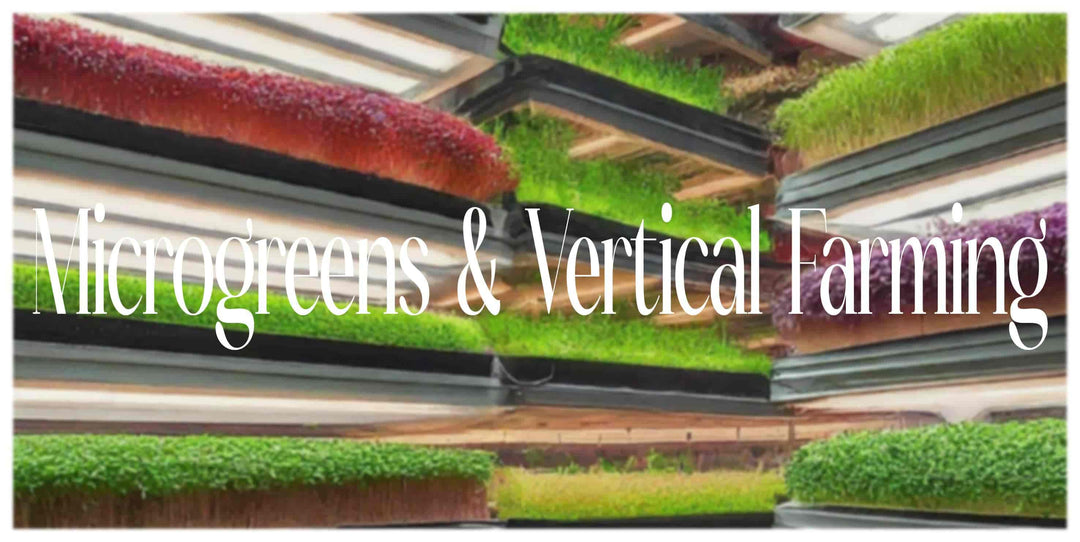Turnips 101
Welcome to Turnips 101, your ultimate guide to all things turnips! Whether you're a seasoned vegetable enthusiast or just starting your culinary journey, this weeks blog will provide you with everything you need to know to grow your very own Turnip this season! Let's get started...
About Turnips
Turnips, often linked to potatoes and beets, are actually more closely related to radishes and arugula. They all belong to the mustard family within the Brassica genus. The turnip plant offers both edible parts - the bulbous taproot, which can be white or purple, and the leafy greens. While originating in eastern Asia, turnips gained popularity and were extensively cultivated during the Roman Empire. Today, they are grown and consumed in temperate regions across the globe.
Turnip Flavour Profile
The mild spiciness of turnips contributes to a unique flavor profile that falls somewhere between that of a potato and a radish. This subtle heat adds an interesting dimension to the overall taste experience. Similar to horseradish, the flavors of concentrates tend to be more pronounced in the sinuses rather than on the tongue. This makes them ideal for combining with various root vegetables or complementing other bold flavors like ginger. Their concentrated nature adds a unique and dynamic taste to culinary creations.
Mature turnips offer a bolder taste compared to their younger counterparts. They are particularly suitable for mashing or including in hearty soups and stews. Turnips, like many root vegetables, are resilient and cost-effective options for keeping fresh produce available during the winter season.
TIP: It's worth noting that larger and older turnips may have tougher skins, which can result in a slightly bitter taste. In such cases, peeling them before consumption is recommended to enhance their flavor.
How To Grow Turnips
Turnips are a versatile vegetable that can be enjoyed throughout the year. However, their prime season is in the fall when they are fully mature and freshly harvested. In the spring, turnips are still small and have a delightful sweetness.
Difficulty: While it is relatively simple to cultivate this plant outdoors in a garden setting, it may not be the most suitable choice for container gardening.
Timing: To achieve successful growth, it is advisable to directly sow seeds from the month of April through August. This timeframe provides optimal conditions for germination and establishment of plants. By following this guideline, gardeners can maximize their chances of achieving a fruitful and vibrant garden.
Sowing: To ensure optimal growth, it is recommended to sow your seeds thinly at a depth of 1cm (½") in rows that are spaced apart by 30-45cm (12-18"). As the plants start to grow, thin them out, leaving a distance of 5cm (2") between each plant. This allows for sufficient space for the plants to develop and receive adequate nutrients.
Soil: These plants have a moderate to heavy appetite for nutrients and thrive best in rich, loamy soil that has been enriched with composted manure. To ensure optimal fertility, it is recommended to add 4 liters (1 US gallon) of complete organic fertilizer for every 10 square meters (100 square feet) of bed. Additionally, it is advised to apply lime to the beds in the fall before planting, as this helps bring the pH level to an ideal range of 6.0 - 6.8.
Growing: To achieve optimal growth of these plants, it is recommended to have loose soil and ensure regular watering. It's important not to leave them in the ground for longer than necessary, as root maggots can cause significant damage. Choose a sunny area in your garden to plant turnip seeds and sow short rows frequently, similar to how you would with radishes.
Pests & Disease: The cabbage root maggot, scientifically known as Delia radicum, is a small fly that poses a threat to brassica crops. These flies lay their eggs on the soil near the base of brassica plants. To safeguard directly-seeded crops from infestation, utilizing a floating row cover can offer effective protection.
Harvesting Turnips
Turnips are a vegetable that can be harvested relatively quickly after planting. Generally, they are ready to be harvested within 40 to 55 days. To ensure that turnips are ready to be harvested, it is recommended to wait until they reach a diameter of 3 inches. However, if you prefer a milder and sweeter taste, it is advised to pick them when they are smaller in size.









